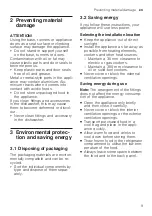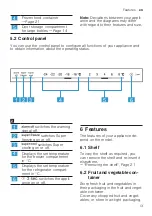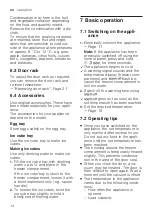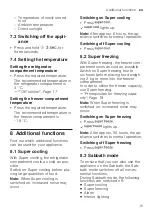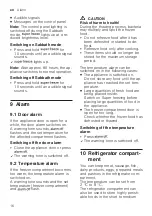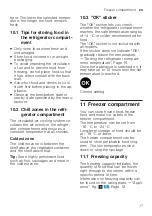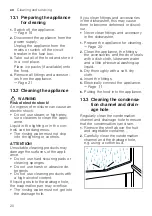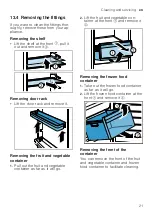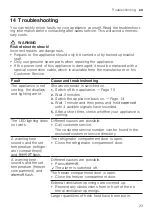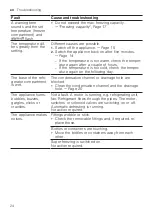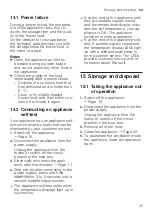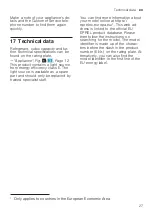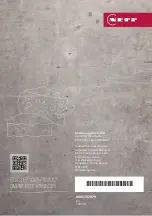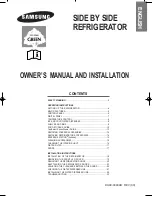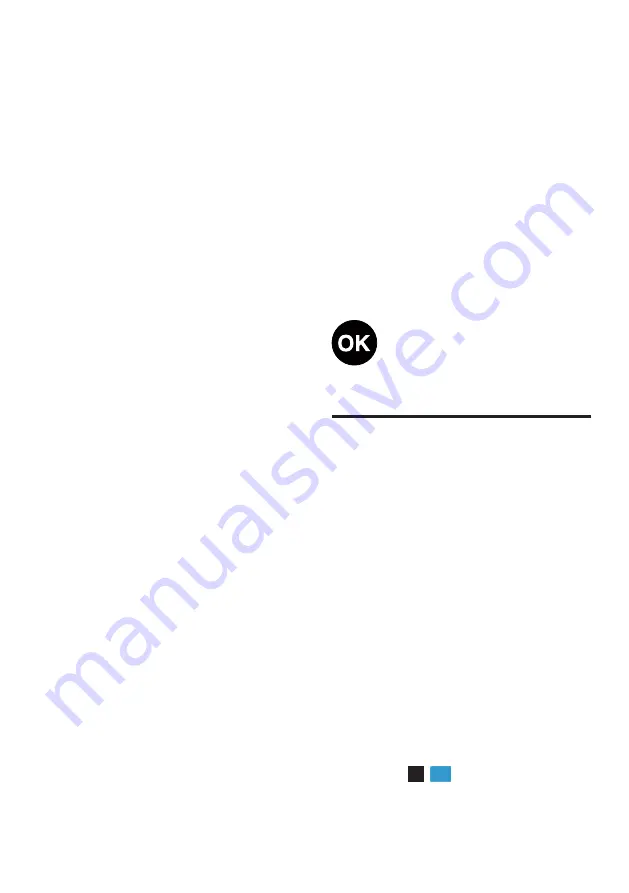
Freezer compartment
en
17
term. The lower the selected temper-
ature, the longer the food remains
fresh.
10.1 Tips for storing food in
the refrigerator compart-
ment
¡
Only store food when fresh and
undamaged.
¡
Store food covered or in air-tight
packaging.
¡
To avoid impeding the circulation
of air and to prevent food from
freezing, do not place food so that
it has direct contact with the back
wall.
¡
Allow hot food and drinks to cool
down first before placing in the ap-
pliance.
¡
Observe the best-before date or
use-by date specified by the manu-
facturer.
10.2 Chill zones in the refri-
gerator compartment
The circulated-air cooling system cir-
culates the air evenly in the refriger-
ator compartment and ensures a
constant temperature at all shelves.
Coldest zone
The coldest zone is between the
shelf above the vegetable container
and the shelf above that.
Tip:
Store highly perishable food
such as fish, sausages and meat in
the coldest zone.
10.3 "OK" sticker
The "OK" sticker lets you check
whether the refrigerator compartment
reaches the safe temperature ranges
of +4 °C or colder recommended for
food.
The "OK" sticker is not included with
all models.
If the sticker does not indicate "OK",
gradually reduce the temperature.
→
"Setting the refrigerator compart-
Once the appliance is switched on, it
may take up to 12 hours until the set
temperature is reached.
Correct setting
11 Freezer compartment
You can store frozen food, freeze
food and make ice cubes in the
freezer compartment.
The temperature can be set from
−16 °C to −24 °C.
Long-term storage of food should be
at –18 °C or lower.
The freezer compartment can be
used to store perishable food long-
term. The low temperatures slow
down or stop the spoilage.
11.1 Freezing capacity
The freezing capacity indicates the
quantity of food that can be frozen
right through to the centre within a
specific period of time.
Information on freezing capacity can
be found on the rating plate.
3







